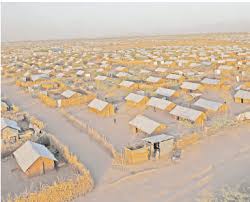
Police in Garissa probe human trafficking cases
Traffickers luring boys aged between 13 and 20 with promise of jobs
The case of trafficked victims from Kenya is seen to capture the element of vulnerability, exploitation and deception, officials said.
In Summary

A multi-agency team has unearthed a new ambitious human trafficking cartel targeting refugees at the Dadaab camp in Garissa County.
Also targeted are some of unsuspecting Kenyans, officials said.
According to investigations, the ring takes its targets to Libya at a fee.
The team is now rushing to forestall more planned trafficking amid dwindling humanitarian support at the camps.
Officials aware of the trend say dozens of unsuspicious and desperate youth have been trafficked only to be welcomed by harsh conditions in camps in Libya.
In Nairobi, the head of Nairobi Region DCI Benson Kasyoki said they are investigating one case that was reported to them last week.
"We are yet to get the recruiting agent but efforts to trace him are ongoing to stop further such crime," he said.
Human trafficking is a severe violation of human rights involving the recruitment, transportation, transfer, harbouring, or receipt of persons through force, fraud, deception, abuse of power, vulnerability and exploitation.
The case of trafficked victims from Kenya is seen to capture the element of vulnerability, exploitation and deception, officials said.
“The traffickers are targeting vulnerable youths aged between 15 and 24 years. They target refugees from Dadaab who are desperate for a better life.”
“They promise them the hope of taking them to Europe to better their lives, however they are misguided because they end up entering into an unknowing contract of being exploited for money,” added an investigator in the team.
According to investigations, the process starts from recruitment within the refugee camps through word of mouth and social media mainly TikTok and WhatsApp.
Once they identify a target, they isolate them and warn them about sharing any plans with their parents or siblings lest they miss out on the “opportunity of a lifetime”.
They are then turned into agents of recruitment by identifying like-minded peers who are also interested in the trip to Europe that is called “Tahrib” meaning migration.
The allure of the Trans Saharan human trafficking syndicate is that they cater to all expenses thus being able to recruit a large number of helpless youth.
Once the victims are assembled and ready to be transported, their mobile phones are then turned off and confiscated by the traffickers to prevent the police from tracking them and rescuing them during their journey when the parents raise the alarm.
The war in Sudan seems to have forced the traffickers to change part of their route.
The investigators have established key and possible routes used by the trans-Saharan human trafficking syndicate.
According to agencies, the first route includes Dadaab –Garissa –Mwingi –Thika –Nairobi-Busia-Kampala-South Sudan-Chad–Libya.
The second one is from Dadaab-Mombasa-Busia-Kampala-South Sudan-Chad –Libya.
The third route is from Dadaab-Garissa-Isiolo-Samburu-Turkana-South Sudan –Libya.
Then there is Dadaab-Garissa-Wajir-Ethiopia-Sudan-Libya.
“The journey to Libya is not easy as some of the victims die on the way due to starvation, being transported in horrible conditions to avoid police detection and diseases due to travelling in new environs without proper care,” said an official aware of the trend.
Once they reach Libya they are taken to concentration camps where they are exposed to torture, forced labour, extortion and organ harvesting.
Some of the victims who are strong and healthy are forced into joining terror organizations such as the Islamic State in Libya as foreign fighters.
The people that hold them in these concentration camps are known as “Magafe” loosely translated to the one that does not miss.
The Magafe proceeds to torture and starve the victims while recording them and sending video recordings to the parents of the victims demanding between Sh2 million and Sh3 million to stop torturing the children.
The traffickers ask the parents to send the money a money transfer service so as to avoid detection from local law enforcement.
After engaging the security forces in the area, they revealed that there is an increase in youth being trafficked to Libya due to diminishing humanitarian support, limited resources, unemployment and a general feeling of hopelessness.
The Magafe are getting assistance by using clandestine routes that have been established by locally embedded actors who willingly work for them for a fee of Sh60,000, another official said.
The Trans-Saharan syndicate has claimed many lives of youngsters and has caused several families to enter into financial decline and debt due to payment of ransoms.
“The youth are urged to be very cautious and weary of people who are promising them a better life and asking them to keep it a secret from their family and friends.”

Traffickers luring boys aged between 13 and 20 with promise of jobs